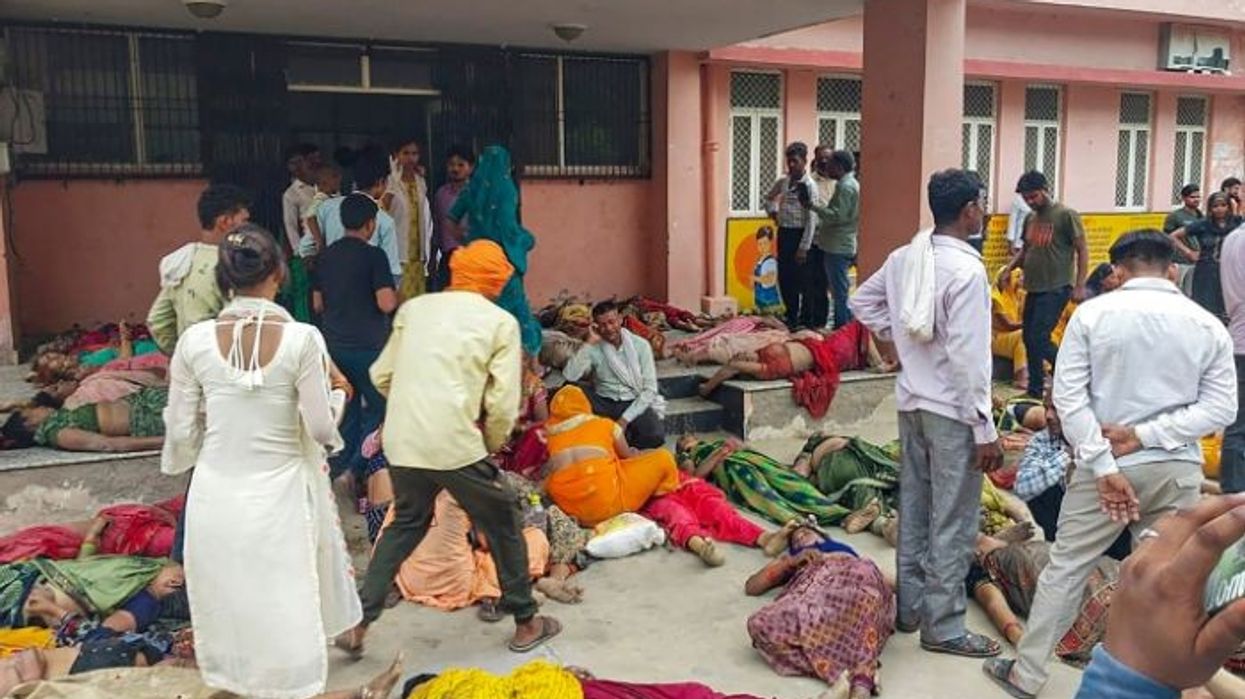MORE THAN hundred people were crushed to death at a Hindu religious gathering in northern India, with scores of others injured, a senior government official said Tuesday (2).
"We have confirmed 97 deaths so far and are focusing on providing relief and medical aid for the victims," said Chaitra V., divisional commissioner of Aligarh city in Uttar Pradesh.
The stampede happened in a village in Hathras district, about 200 km (125 miles) southeast of the national capital New Delhi, where authorities said a large crowd had gathered on an area of open ground in response to a call from a local religious leader.
Videos on social media showed bodies piled up on the ground outside a local hospital.
"The incident happened due to overcrowding at the time when people were trying to leave the venue," Hathras district administrator Ashish Kumar told reporters.
An unidentified witness told broadcaster India Today that there was a narrow exit at the venue: "As we tried to exit towards a field, suddenly a commotion started, and we didn't know what to do."
Uttar Pradesh is India's most populous state with more than 200 million people. Its chief minister Yogi Adityanath ordered an investigation.
"Instructions have been given to the concerned officials to conduct relief and rescue operations on war footing and to provide proper treatment to the injured," he posted on X.
"It has come to my attention that there have been many tragic deaths in the stampede in Hathras, UP," prime minister Modi said. "I express my condolences to those who lost their lives in this incident. I hope for the speedy recovery of all the injured."
The prime minister said senior officials of the central government are in constant contact with the Uttar Pradesh administration to coordinate aid efforts.
"Through this forum, I assure everyone that all possible assistance will be provided to the victims," he said.
The PM Office (PMO) announced an ex-gratia of Rs 200,000 (£1,890) from the Prime Minister's National Relief Fund for the next of kin of each deceased in the mishap in Hathras. "The injured would be given Rs 50,000 (£473)," the PMO said in a post on X.
Witnesses and local media reports said the victims were crushed to death as the audience left the sermon.
"When the sermon finished, everyone started running out," Shakuntala, a woman who gave only one name, told the Press Trust of India news agency.
"People fell in a drain by the road. They started falling one on top of the other and got crushed to death."
Local chief medical officer Umesh Kumar Tripathi told reporters that most of the dead were women.
"Many injured have also been admitted," he said.
Deadly incidents are common at places of worship during major religious festivals in India, the biggest of which prompt millions of devotees to make pilgrimages to holy sites.
At least 112 people were killed in 2016 after a huge explosion caused by a banned fireworks display at a temple marking the Hindu new year.
The blast ripped through concrete buildings and ignited a fire at a temple complex in Kerala state, where thousands had gathered.
Another 115 devotees were killed in 2013 in a stampede at a bridge near a temple in Madhya Pradesh.
Up to 400,000 people were gathered in the area and the stampede began after a rumour spread that the bridge was about to collapse.
About 224 pilgrims died and more than 400 others were injured in a 2008 stampede at a hilltop temple in the northern city of Jodhpur.
(Agencies)














